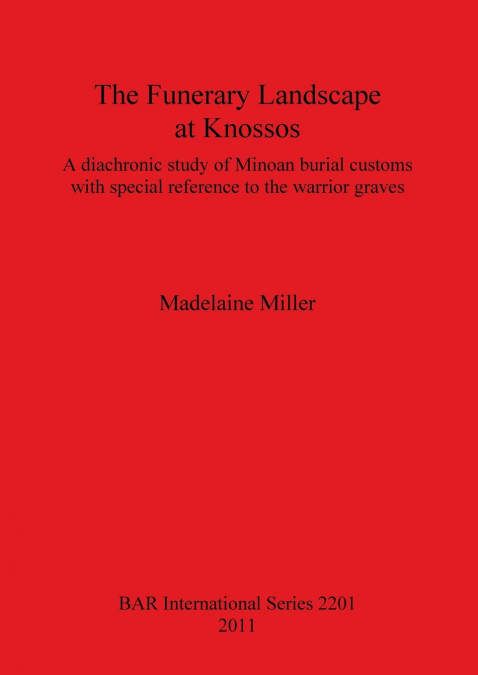
 Librería Desdémona
Librería Desdémona
 Librería Samer Atenea
Librería Samer Atenea
 Librería Aciertas (Toledo)
Librería Aciertas (Toledo)
 Kálamo Books
Kálamo Books
 Librería Perelló (Valencia)
Librería Perelló (Valencia)
 Librería Elías (Asturias)
Librería Elías (Asturias)
 Donde los libros
Donde los libros
 Librería Kolima (Madrid)
Librería Kolima (Madrid)
 Librería Proteo (Málaga)
Librería Proteo (Málaga)
During the last century's archaeological investigations of the advanced Bronze Age culture maintained by the so-called Minoans on the island of Crete, a number of tombs dated to the Late Minoan period and containing weapons have been discovered in the surroundings of the site of Knossos. The tombs are not confined to a certain area or cemetery, but are rather dispersed around the Palace and town. Although they are characterised by their weapons, other artefacts - such as bronze vessels and certain pottery types - also distinguish these tombs. The tombs are of three types: chamber tombs with long dromoi, shaft graves and pit-caves. Various labels have been designated for them: tombs with weapons, warrior tombs, warrior graves and weapon-tombs. The warrior graves are often discussed in relation to the question of when the Mycenaeans arrived in Crete. Most scholars agree that a Mycenaean presence or power in Crete existed in the Late Bronze Age, but when their arrival would have taken place has not yet enjoyed consensus. Previous scholarship raises a number of questions that are dealt with in this work in relation to the funerary landscape at Knossos, including: to what degree do the burial customs in fact change in LM II, and what about the mainland influences? If the archaeological material points in that direction, how are we to understand such a transformation of the mortuary practices? Would this indicate an ethnic change? If, on the other hand, the material points towards a gradual process beginning already in LM I or earlier, with elements of mainland traits, what would that indicate? The tombs, shaft graves and pit-caves of Knossos are re-examined in an attempt to put answers to these intriguing questions.